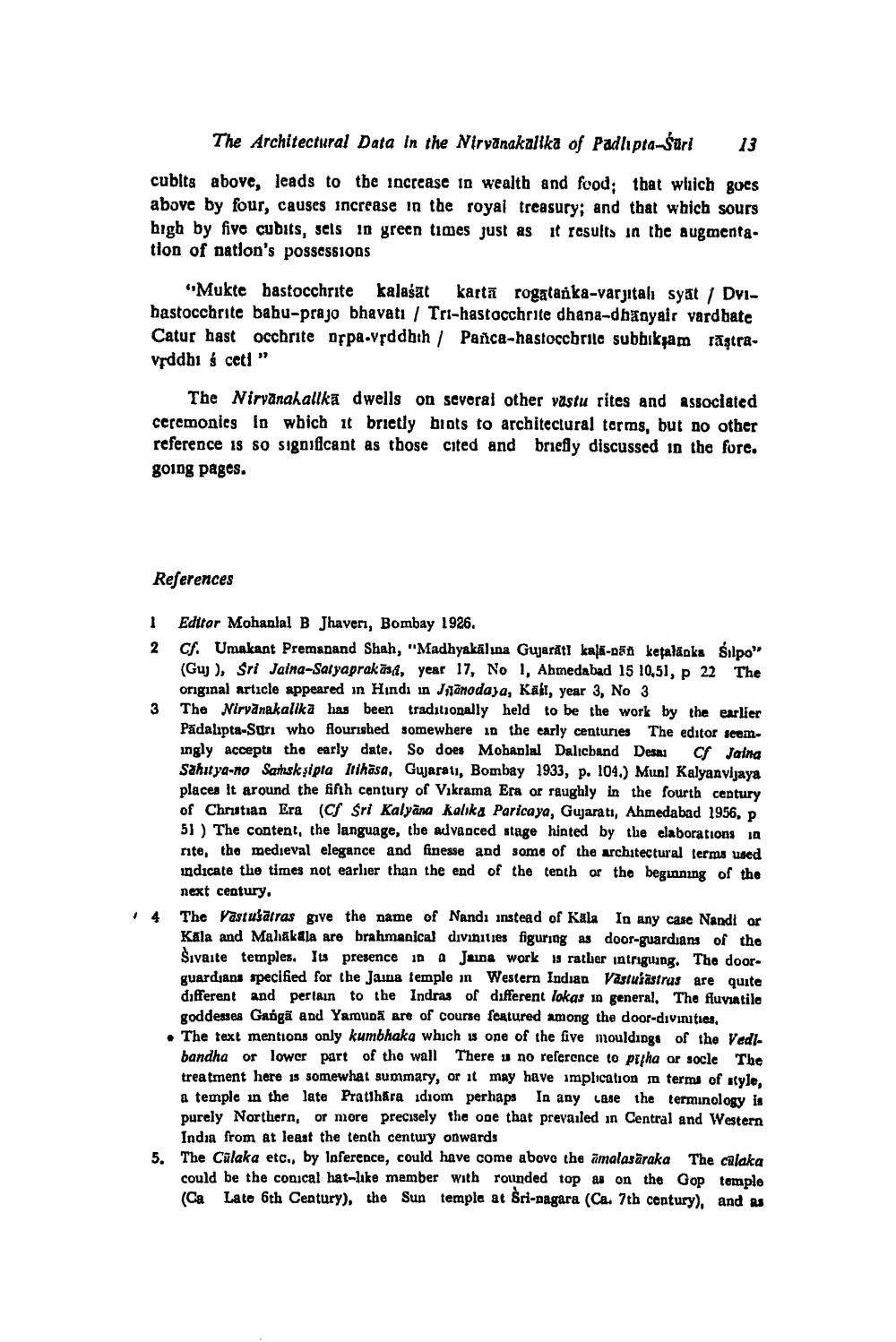________________
The Architectural Data In the Nirvanakallka of Padhipta-Kari
13
cubita above, leads to the increase in wealth and food; that wlzich goes above by four, causes increase in the royal treasury; and that which sours high by five cubits, sels in green times just as it results in the augmentation of nation's possessions
"Mukte bastocchrite kalasat karta rogalanka-varjitah syat | Dvihastocchrite bahu-prajo bhavati / Tri-hastocchrite dhana-dhaayair vardhate Catur hast occhrite oppa.vrddbth | Panca-hastoccbrilc subbikam tāstraVrddbi s ceti”
The Nirvanahallka dwells on several other vastu rites and associated ceremonies in which it brietly biots to architectural terms, but no other reference is so significant as those cited and briefly discussed in the fore. going pages.
References
| 2
Editor Mohanlal B Jhaverı, Bombay 1926. Cf. Umakant Premanand Shah, "Madhyakalına Gujarati kalā-258 ketalanka Silpo" (Guy ), Sri Jaina-Satyaprakasa, year 17, No 1, Abmedabad 15 10,51, p 22 The original article appeared in Hindi in Jijānodaja, Kali, year 3, No 3 The Nirvanakalika has been tradılionally held to be the work by the earlier Padalipta-Suri who flourished somewhere in the early centuries The editor seemingly accepts the early date. So does Mobanlal Dalıcband Desni cf Jaina Sahitya-no Sanskşipla Itihasa, Gujarati, Bombay 1933, p. 104.) Munl Kalyanvijaya places it around the fifth century of Vikrama Era or raughly in the fourth century of Chrutian Era (Cf Sri Kalyāna kalika Paricaya, Gujarati, Ahmedabad 1956. P 51) The content, the language, the advanced stage hinted by the elaborations in rite, the medieval elegance and finesse and some of the architectural terms used indicate the times not earlier than the end of the tenth or the beginning of the next century. The vastušatras give the name of Nandı instead of Kala In any case Nandi or Kala and Mahakala are brahmanical divinities figuring as door-guardians of the Šivate temples. Its presence in a Jaina work is rather intriguing. The doorguardjans specified for the Jama temple in Western Indian Vastusastrus are quite different and pertain to the Indras of different lokas in general, The fluviatilo goddesses Gangā and Yamunā are of course featured among the door-divinties, The text mentions only kumbhaka which one of the five mouldings of the Vedlbandha or lower part of the wall There is no reference to parha or socle The treatment here is somewhat summary, or it may have implication in terms of xyle, a temple in the late Prathara idiom perhaps In any case the terminology is purely Northern, or more precisely the one that prevailed in Central and Western India from at least the tenth century onwards The Cülaka etc., by lnference, could have come above the āmalasäraka The calaka could be the conical hat-like member with rounded top as on the Gop temple (Ca Late 6th Century), the Sun temple at Sri-pagara (Ca. 7th century), and as
$




